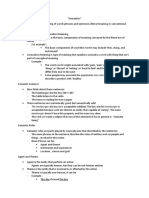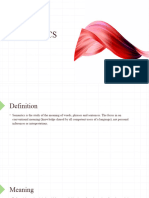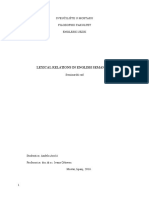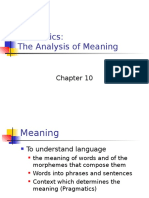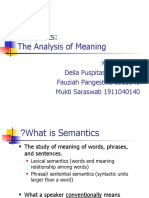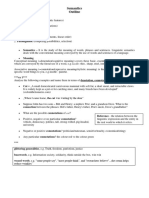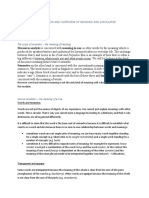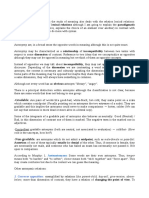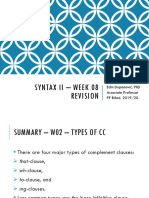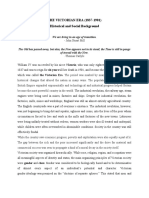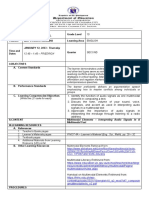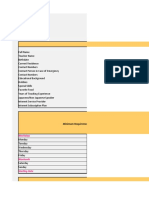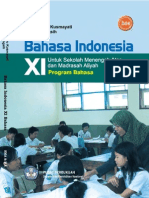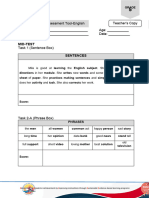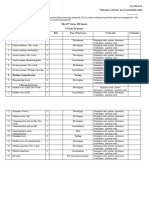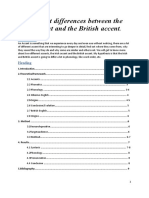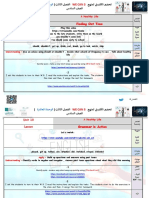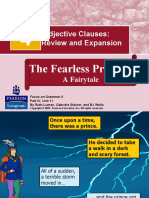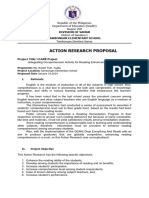0% found this document useful (0 votes)
307 views21 pagesSemantics
This document discusses key concepts in lexical semantics including lexemes, semantic features, lexical relations, and prototypes. It defines lexical semantics as the study of how meaning is encoded in words, and outlines several lexical relations including synonymy, antonymy, hyponymy, homophones, homonyms, and polysemy. Examples are provided for each concept to illustrate semantic features and relationships between words.
Uploaded by
Hana BiščevićCopyright
© © All Rights Reserved
We take content rights seriously. If you suspect this is your content, claim it here.
Available Formats
Download as DOCX, PDF, TXT or read online on Scribd
0% found this document useful (0 votes)
307 views21 pagesSemantics
This document discusses key concepts in lexical semantics including lexemes, semantic features, lexical relations, and prototypes. It defines lexical semantics as the study of how meaning is encoded in words, and outlines several lexical relations including synonymy, antonymy, hyponymy, homophones, homonyms, and polysemy. Examples are provided for each concept to illustrate semantic features and relationships between words.
Uploaded by
Hana BiščevićCopyright
© © All Rights Reserved
We take content rights seriously. If you suspect this is your content, claim it here.
Available Formats
Download as DOCX, PDF, TXT or read online on Scribd
/ 21




